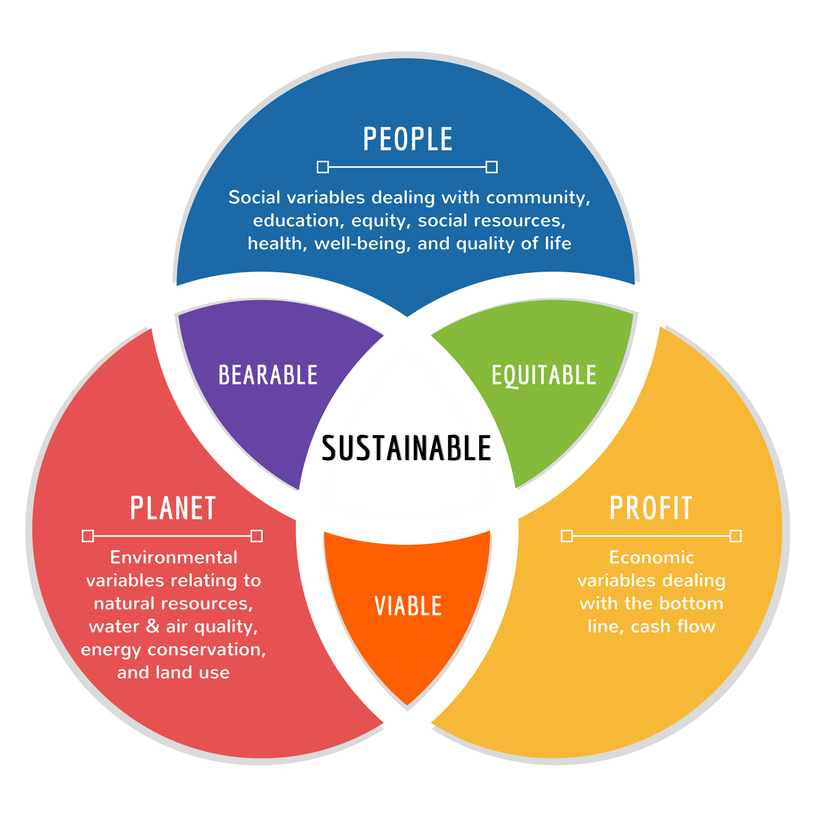Sustainable Composites
PowerPoint
papers
Index

| Composites Design and Manufacture (Plymouth University teaching support materials) Sustainable Composites |
Lecture PowerPoint |
Review papers |
Subject Index |
 |
CAUTION: For the purpose of the Sustainable Composites pages, the materials described are those from natural sources, without prejudice to the results of any future Quantitative Life Cycle Analysis (QLCA) which may (or may not) make the case for these materials being more environmentally-friendly than equivalent systems manufactured from man-made fibres and synthetic resins. The inclusion of any specific system here is not an endorsement of that product: potential users will need to fully consider each system in the context of their specific technical requirements.
For a broader introduction to sustainability, see this webpage.
The World Commission on Environment and Development suggested that Sustainable Development [Brundtland Commission Report 1987, 1] could be defined as "Meeting the needs of the present without compromising the ability of future generations to meet their own needs". Sustainability is now generally interpreted as a balance between Economic, Environmental and Equity/social factors (a.k.a. Triple E) or between Profit, Planet and People (a.k.a. Triple P) as illustrated in Figure 1. Brundtland report identified Governance as a fourth factor, but it is rarely explicitly found in the analysis of sustainability for a given situation. More information on sustainability can be found at the MST326 webpage.

Wool and Sun [2] have reviewed the cost-effective utilisation of many common crop plants which may be used to make high-performance engineered materials. The plants produce oils, proteins, polysaccharides and fibres which can be converted to plastics, adhesives and composite materials. The sustainable development of bio-based materials requires (a) Biotechnology of plants, (b) Plant Growth, (c) Plant Processing, (d) Plant Utilization and (e) Materials Mass Production. Wool and Sun also consider the key barriers to integrating these steps and the fundamental issues for the mass production of low cost, sustainable new bio-based materials and products. Fowler et al [3] have reviewed the technology, environmental credentials and market forces affecting biocomposites.
Cullen and Summerscales [4] have considered the problem of how to effectively determine the fibre volume fraction for natural fibre composites. Madsen et al [5] considered that the porosity in plant (and other hollow) fibre composites can be divided into three components:
They [5] suggest there is a transition value of fibre weight fraction which gives an optimal combination of high fibre volume fraction, high composite density and low porosity. They studied natural fibres (flax, hemp and jute) in polymer matrix (polypropylene or polyethyleneterephthalate) composites and observed that the thermoplastic matrix is not able to impregnate the fibre lumen.
Wambua et al [6] have evaluated the ballistic performance of natural fibre composites both as monolithic composites and having a mild steel sheet attached to one or both faces. The hybrid structures absorbed more energy than either mild steel alone or the monolithic composites. The critical absorbed kinetic energy of monolithic materials was ranked flax composites > mild steel > hemp/jute composites.
The nova-Institut has recently published data on the use of natural fibres in German automotive production to 2005 [7].
Wood-based composites and panel products
Chen et al [8] have reviewed the materials and structural perspectives on redsign of wood using structural engineering, chemical and/or thermal modification to achieve desired mechanical, fluidic, ionic, optical and thermal properties.
A major market, related to monolithic composites, which is not directly addressed by this course is the use of wood-based materials and wood-fibre composites. Wood has always been a significant resource for human life. In 1907, Bakeland added wood particles to the newly developed bakelite as a reinforcing filler. Composite wood panel products [9] are made from wood-based materials bonded together with a synthetic adhesive using heat and pressure. The materials include veneer, strands, particles and fibres. The nature of the wood raw material and the adhesive essentially determine the characteristics of the various products. These include mechanical properties, water resistance, dimensional stability, surface quality and machinability. Strategis [9] have produced a Technology Road Map for wood-based panel products.
In 1974, ICMA San Giorgio introduced an innovative extruded panel named Woodstock (a mixture of PP in flakes with wood-powder) specifically engineered for the automotive industry. Sperber [10] has recently reviewed developments in wood fibre composites, while Gsöls et al [11] have considered the interaction between resins and wood.
References
Further reading